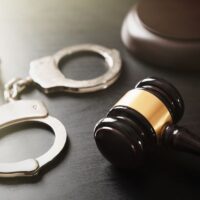What Is Reckless Endangerment in New York?

Many criminal offenses are commonly known and readily understood even without legal training – shoplifting, arson, robbery, murder. Even if you don’t know all the elements of a listed offense that are critical to know when defending yourself against criminal charges, you have a general idea of what is meant by these terms. But what about Reckless Endangerment? It’s a crime in New York, and a serious one at that. Learn more below about this criminal offense, including the elements required to convict and possible defenses to avoid a conviction. If you’ve been arrested and charged with Reckless Endangerment or other misdemeanor or felony offenses in the Hudson Valley, contact Dupée & Monroe in Goshen to review your situation with a skilled and experienced New York criminal defense attorney.
Definition of Reckless Endangerment in New York
In New York, Reckless Endangerment is generally defined as engaging in conduct that creates a substantial risk of severe physical injury to another person. The key element here is the term “reckless,” which indicates a conscious disregard for a substantial and unjustifiable risk. Importantly, intent to actually cause harm is not a requirement for this charge; merely creating the risk is sufficient.
Reckless Endangerment can be charged in a couple of different ways depending on the circumstances – Reckless Endangerment in the Second Degree or Reckless Endangerment in the First Degree.
-
Reckless Endangerment in the Second Degree. This is the less severe of the two forms of Reckless Endangerment. It is classified as a Class A misdemeanor and is defined under Section 120.20 of the New York Penal Law. Convictions can lead to a sentence of up to one year in jail or three years of probation, as well as fines.
-
Reckless Endangerment in the First Degree. A more serious charge, Reckless Endangerment in the First Degree is a Class D felony, governed by Section 120.25 of the New York Penal Law. Convictions can result in a prison sentence ranging from two to seven years and significant fines.
Elements of the Crime
To secure a conviction for Reckless Endangerment in New York, the prosecution must prove:
- Reckless Conduct: The defendant acted recklessly, not just negligently.
- Substantial Risk: The defendant’s actions created a substantial risk of severe physical injury.
- Lack of Justification: There was no valid justification for taking the risk.
These elements are not necessarily well-defined in the law, giving prosecutors latitude to charge a broad range of conduct as Reckless Endangerment. This charge could conceivably be brought for anything from leaving a child in the car when it’s hot outside to shooting a gun in your backyard, or from drag racing to having sex with someone without disclosing you have an STD. Given the potential for fines, jail time and a criminal record, it’s imperative to take any charge seriously and deal with it appropriately, regardless of the underlying conduct which gave rise to the charge.
Defenses for Reckless Endangerment Charges
If you’ve been charged with reckless endangerment, it’s important to get legal counsel and representation right away to protect your rights. First of all, your criminal defense lawyer will make sure you are treated fairly and that your constitutional rights are not violated. Errors made by the police or prosecutors could justify having the charges against you dropped if pursued by a knowledgeable attorney working diligently on your behalf. In addition, you could have one or more defenses against the crime charged. In the case of Reckless Endangerment, some of the defenses you might have available include:
- Insufficient Evidence: The prosecution must prove all elements of the crime beyond a reasonable doubt. Your lawyer will challenge every piece of evidence and cast doubt on it as appropriate.
- Lack of Recklessness: Demonstrating that your actions were not reckless but instead were at worst negligent or accidental.
- Justification: Arguing that there was a valid reason for the risky conduct, such as self-defense.
Consult with a Qualified New York Criminal Defense Attorney After Reckless Endangerment Arrest
If you’re facing Reckless Endangerment charges in New York, it is imperative to consult with an experienced criminal defense attorney who is well-versed in New York Penal Law. Your lawyer can evaluate your case, guide you through the legal process, and develop a strategic defense plan tailored to your situation. In New York’s Hudson Valley, call Dupée & Monroe in Goshen at 845-294-8900 for immediate assistance.
